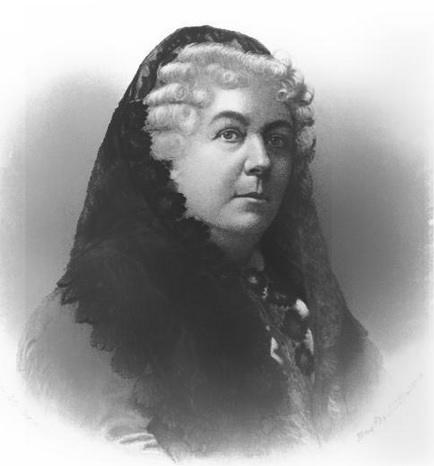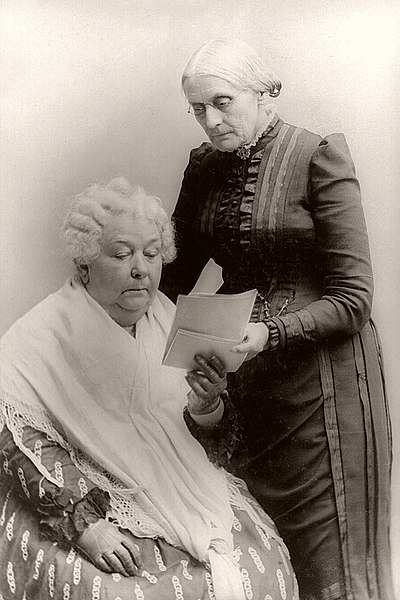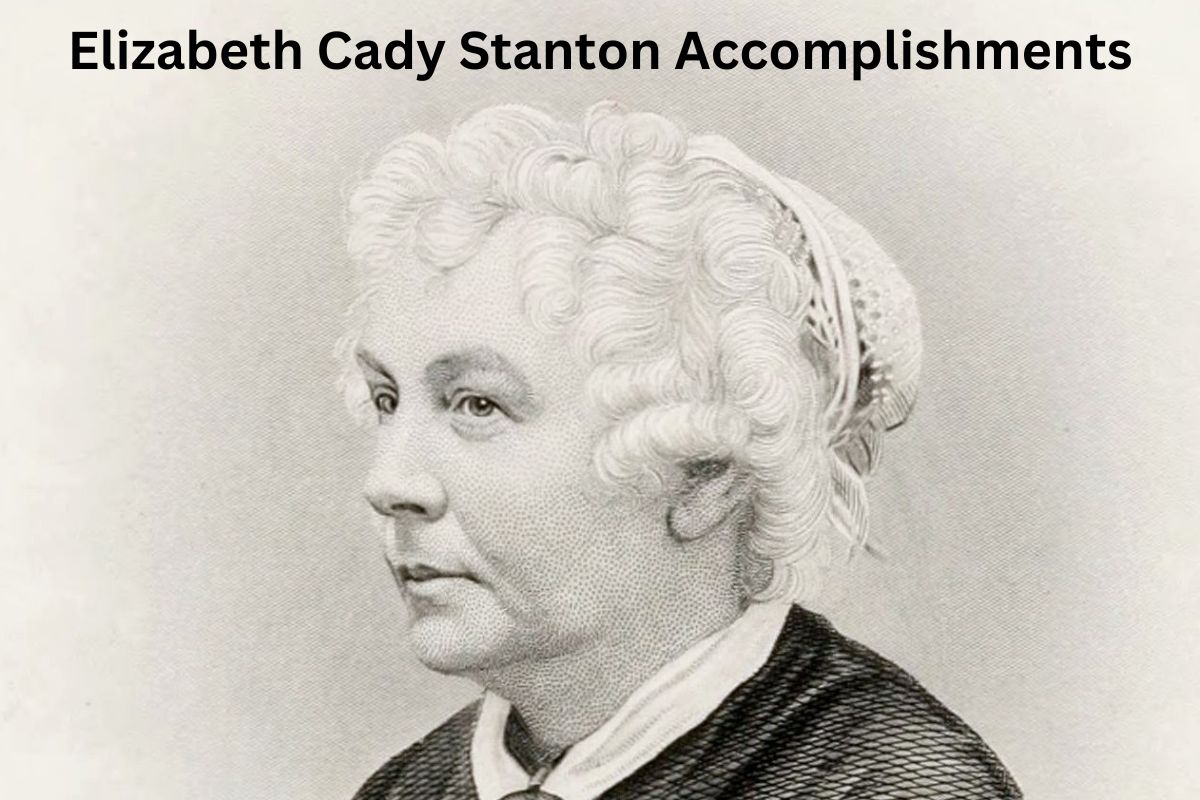Elizabeth Cady Stanton (1815-1902) was an American suffragist, social activist, and key figure in the early women’s rights movement.
She co-organized the historic Seneca Falls Convention in 1848 and played a crucial role in drafting the Declaration of Sentiments, which demanded women’s right to vote. Stanton co-founded the National Woman Suffrage Association in 1869 and served as its first president.
Her advocacy for women’s suffrage and intersectional activism left a lasting impact on the movement. Stanton’s work continues to inspire those fighting for gender equality today.
Accomplishments of Elizabeth Cady Stanton
1. Co-organizing the Seneca Falls Convention
The Seneca Falls Convention, held on July 19-20, 1848, was a landmark event in the women’s suffrage movement.
Elizabeth Cady Stanton, along with Lucretia Mott and other women activists, organized this convention to address the social, political, and legal rights of women.
Also Read: Facts About Elizabeth Cady Stanton
Stanton was inspired by the anti-slavery movement and the Declaration of Independence, which fueled her desire for women’s rights and equality.
The convention attracted around 300 attendees, both women and men, and featured speeches, discussions, and the signing of the Declaration of Sentiments.

2. Drafting the Declaration of Sentiments
One of the most significant outcomes of the Seneca Falls Convention was the drafting of the Declaration of Sentiments, a document that outlined the demands and grievances of women.
Also Read: Timeline of Elizabeth Cady Stanton
Elizabeth Cady Stanton played a pivotal role in writing this historic declaration. Modeled after the Declaration of Independence, it asserted that “all men and women are created equal” and proclaimed that women should have the same rights as men, including the right to vote.
The Declaration of Sentiments marked the first formal call for women’s suffrage in the United States and became a foundational text of the women’s rights movement.
3. Advocacy for Women’s Suffrage
Elizabeth Cady Stanton was a relentless advocate for women’s suffrage. She wrote numerous speeches, articles, and letters that championed the cause of women’s right to vote.
Stanton believed that political empowerment through suffrage was crucial for women to achieve equality and to address the wide range of social and legal injustices they faced.
She traveled extensively, delivering impassioned speeches and engaging in public debates to raise awareness and rally support for suffrage.
4. Founding the National Woman Suffrage Association (NWSA)
In 1869, Elizabeth Cady Stanton, along with Susan B. Anthony, established the NWSA. The formation of this organization marked a turning point in the suffrage movement, as it advocated for a federal constitutional amendment to secure women’s right to vote.
Stanton served as the first president of the NWSA and played a key role in shaping its agenda. The NWSA focused on a broader range of women’s issues beyond suffrage, including divorce reform, employment rights, and educational opportunities.
Stanton’s leadership and activism within the NWSA propelled the suffrage movement forward and helped to mobilize women across the nation.

5. Publishing “The Woman’s Bible”
In the late 19th century, Stanton authored “The Woman’s Bible,” a significant work that challenged traditional interpretations of biblical texts that perpetuated gender inequality.
Stanton, along with a group of women scholars, examined biblical passages related to women and offered feminist interpretations that emphasized women’s equality and autonomy.
The publication of “The Woman’s Bible” sparked controversy and debate, but it also contributed to a broader understanding of how religious texts could be reinterpreted to support women’s rights and liberation.
6. Co-founding the International Council of Women
In 1888, Elizabeth Cady Stanton played a key role in the establishment of the International Council of Women. This organization aimed to bring together women’s organizations from around the world to promote women’s rights and gender equality on a global scale.
Stanton recognized the importance of international cooperation and solidarity in advancing the cause of women’s suffrage.
The International Council of Women provided a platform for sharing ideas, strategies, and experiences, fostering collaboration among women’s rights activists across national boundaries.
7. Lobbying for women’s property rights
Elizabeth Cady Stanton was a vocal advocate for legal reforms that would grant married women control over their property and earnings.
During that time, the laws of coverture were in place, which meant that upon marriage, a woman’s legal rights and property ownership were transferred to her husband.
Stanton recognized the economic vulnerability this created for women and tirelessly campaigned for changes in laws.
Her efforts contributed to significant legal reforms in many states, gradually granting married women greater control over their assets and financial independence.
8. Speaking at the New York State Constitutional Convention
In 1867, Elizabeth Cady Stanton delivered a powerful speech at the New York State Constitutional Convention. Her speech focused on advocating for women’s suffrage and challenging the prevalent gender norms and discrimination.
Stanton argued that women were capable and deserving of equal political rights and should be granted the right to vote. Her eloquent and persuasive address helped to raise awareness about the suffrage movement and generated support for women’s political empowerment.
9. Intersectional Activism
Elizabeth Cady Stanton’s activism extended beyond women’s suffrage and encompassed the concept of intersectionality, which recognizes that different forms of oppression intersect and compound each other.
Although the term “intersectionality” was not coined until decades after Stanton’s time, her work demonstrated an understanding of the interconnected nature of various forms of discrimination.
Stanton recognized the need to address issues of race, class, and other forms of inequality that intersected with gender. She understood that women’s experiences and struggles were influenced by their racial and socioeconomic backgrounds.
Stanton actively advocated for the rights and equality of African American women, acknowledging the unique challenges they faced due to both gender and race-based discrimination.
10. Legacy and Inspiration
Elizabeth Cady Stanton’s accomplishments and contributions have left an indelible mark on the women’s rights movement.
Her relentless advocacy for suffrage, her writings challenging gender norms and interpretations of religious texts, and her leadership in establishing key organizations such as the NWSA and the International Council of Women have shaped the trajectory of the movement.
Stanton’s ideas and efforts continue to inspire feminists and activists fighting for gender equality.
Her work laid the foundation for future generations of suffragettes and women’s rights activists, culminating in the eventual passage of the Nineteenth Amendment to the United States Constitution, granting women the right to vote in 1920.
Stanton’s legacy as a pioneering feminist and social reformer endures as an inspiration for ongoing efforts towards achieving gender equality.
